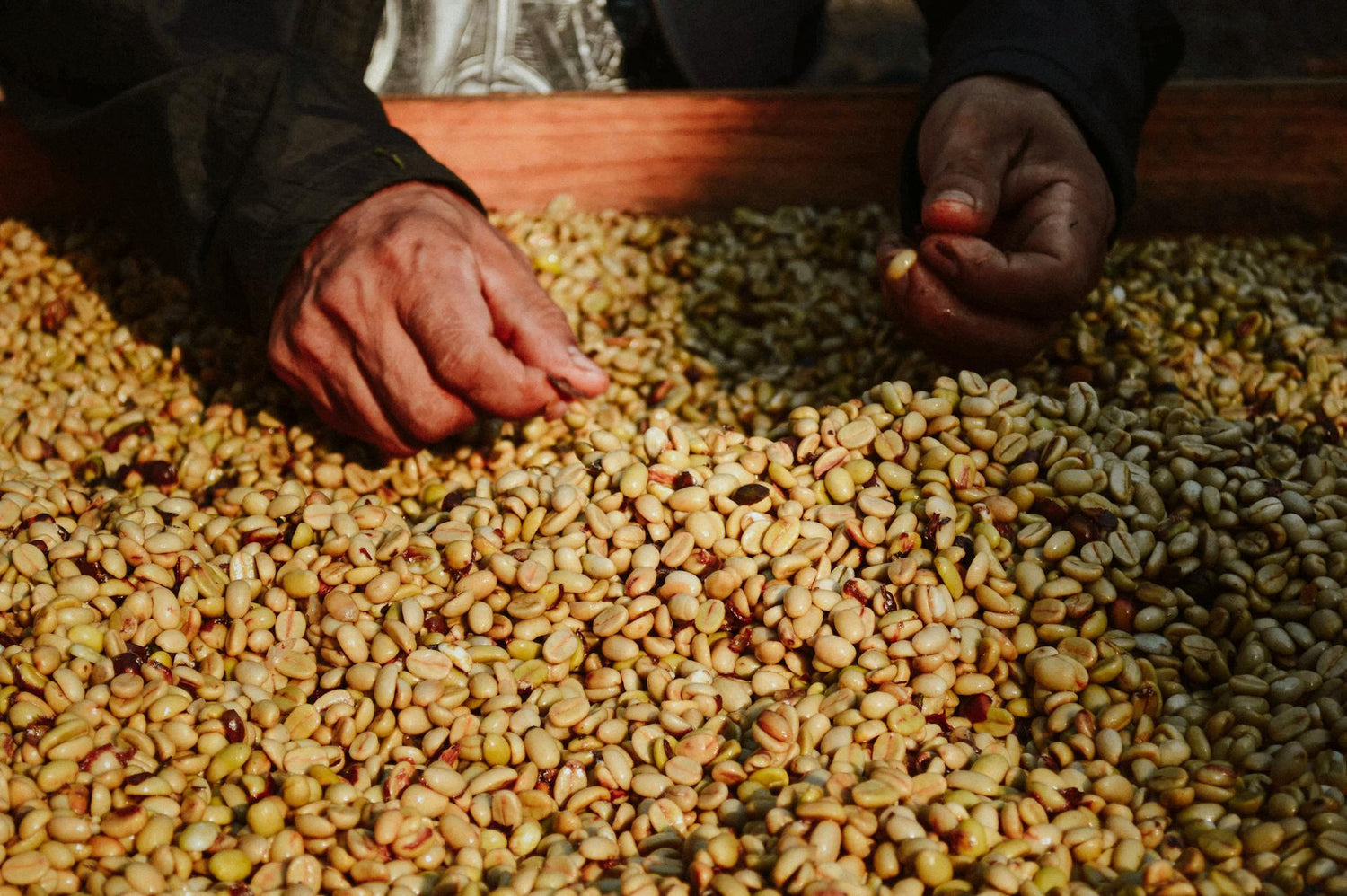Exploring the Wet-Hulling Coffee Process of Indonesia

Exploring the Wet-Hulling Coffee Process of Indonesia: A Deep Dive into Giling Basah
Indonesia, a nation renowned not only for its rich culture and history but also as a distinguished coffee producer, boasts a unique method in its coffee processing arsenal—wet-hulling, locally known as "Giling Basah." This method is not merely a technique but a defining characteristic of Indonesian coffee. Today we wanted to share with you the nuances of wet-hulling, including its cultural importance, the distinctive flavors it imparts on the coffee, and its significance within the global coffee landscape. At Virtuoso, we believe the more you understand about a coffee's story, and especially the context of its origin, the more you might appreciate the taste experience.
Understanding the Wet-Hulling Process
Giling Basah, or wet-hulling, is a process that stands in contrast to the more commonly known washed or dry processing methods. Its adaptation to Indonesia’s humid environment plays a pivotal role in its distinctiveness:
- Harvesting: The process begins with the meticulous handpicking of ripe coffee cherries, which ensures the quality and uniformity of the beans.
- Pulping: Shortly after harvesting, the outer skin of the cherries is removed, revealing the mucilage-covered beans beneath.
- Fermentation: The beans undergo a fermentation process overnight, which helps break down the mucilage, a critical step for the development of flavor.
- Washing: Post-fermentation, the mucilage is washed away, and the beans, still encased in their parchment, are partially dried for a short period.
- Hulling: The distinctive step of wet-hulling involves removing the parchment from the beans while they are still damp, unlike other methods where beans are fully dried first. This crucial step impacts both the texture and the flavor profile of the coffee.
The expedited process from washing to hulling is particularly suited to Indonesia's climate and helps prevent spoilage, which can be a risk with longer drying times in humid conditions.
Cultural Significance of Wet-Hulling in Indonesia
The practice of wet-hulling is deeply embedded in Indonesia's coffee culture. Originating from a practical need to process coffee quickly in a humid climate, it has grown into a tradition that supports the livelihoods of numerous farming communities throughout the islands. This method is not just about processing efficiency; it reflects the adaptability and resilience of Indonesian coffee farmers over generations.
Socially and economically, coffee represents a significant aspect of rural life in Indonesia. Many communities depend on the income generated from coffee production, and the efficiency of wet-hulling allows them to manage cash flow effectively, ensuring economic stability. The method fosters a sense of community and cooperation among farmers, as they often share resources like pulping machines and drying areas.
Flavor Profile Produced by Wet-Hulling
Indonesian coffees processed by wet-hulling are renowned for their full body and markedly low acidity. These beans are characterized by their rich, earthy undertones—often with notes of cedar, spice, and chocolate. This bold flavor profile is distinctive, setting Indonesian coffees apart in the global market where uniqueness is highly valued.
The wet-hulling method contributes to these flavor characteristics by influencing the moisture content and fermentation environment of the beans. The practice of hulling the beans while they are still moist leads to a different chemical breakdown within the bean, which many argue contributes to the coffee's heavier body and smoother feel.
For coffee lovers looking to explore these unique flavors, varieties such as Sumatran Mandheling and Sulawesi Toraja are prime examples, offering a glimpse into the depth and complexity that wet-hulled beans can offer.
Why Wet-Hulling is Important
The significance of wet-hulling extends beyond its cultural roots to encompass substantial economic and environmental impacts. Economically, it allows for faster processing and sale, which is crucial for the livelihoods of smallholder coffee farmers who rely on quick turnover to sustain their operations. This method also places Indonesian coffees in a unique position within the specialty coffee market, appealing to connoisseurs and enthusiasts around the world who seek out rare and distinctive flavors.

Green coffee waiting to be wet hulled in Sumatra
From an environmental perspective, wet-hulling is seen as a method that can be both beneficial and challenging. While it uses less water than the washed process, the need for proper waste management and controlled use of water resources remains a critical discussion point in terms of sustainability.
Giling Basah is more than just a coffee processing method; it is a testament to Indonesia's rich heritage and innovative spirit in the face of climatic challenges. It supports not only the economic stability of rural areas but also enriches the global coffee culture with its unique flavors. As the coffee industry continues to evolve, the traditional practices like wet-hulling will play an integral role in shaping the future of coffee, both in Indonesia and worldwide.
For those intrigued by the rich tapestry of coffee flavors, a cup of Indonesian wet-hulled coffee offers not just a taste but a journey through the history and culture of this fascinating archipelago. Let us appreciate and support these traditional methods that bring such distinctive flavors to our cups.





